Chapter: Biochemistry: Nucleic Acids: How Structure Conveys Information
What kinds of RNA play a role in life processes?
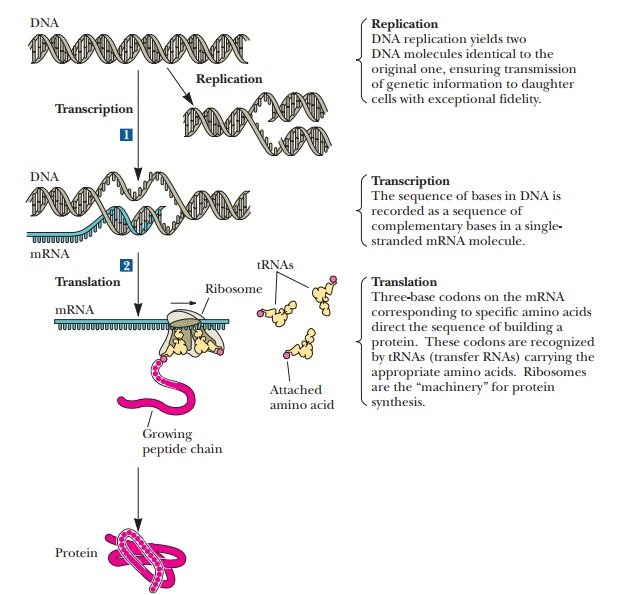
What kinds of RNA play a role in
life processes?
Six
kinds of RNA-transfer RNA (tRNA), ribosomal RNA (rRNA), messenger RNA (mRNA),
small nuclear RNA (snRNA), micro RNA (miRNA), and small interfering RNA (siRNA)-play
an important role in the life processes of cells. Figure 9.20 shows the process
of information transfer. The various kinds of RNA participate in the synthesis
of proteins in a series of reactions ultimately directed by the base sequence
of the cell’s DNA. The base sequences of
all types of RNA are determined by that ofDNA. The process by which the
order of bases is passed from DNA to RNA is calledtranscription.
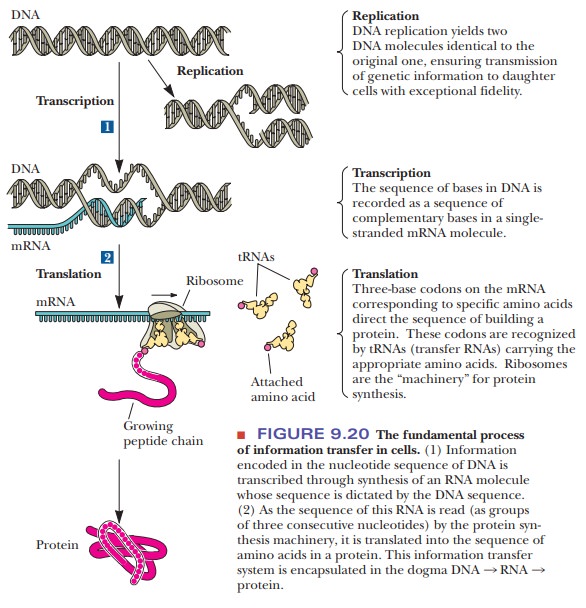
Ribosomes,
in which rRNA is associated with proteins, are the sites for assembly of the
growing polypeptide chain in protein synthesis. Amino acids are brought to the
assembly site covalently bonded to tRNA, as aminoacyltRNAs. The order of bases
in mRNA specifies the order of amino acids in the growing protein; this process
is called translation of the genetic
message. A sequence of three bases in mRNA directs the incorporation of a
particular amino acid into the growing pro-tein chain. We are going to see that
the details of the process differ in prokaryotes and in eukaryotes (Figure
9.21). In prokaryotes, there is no nuclear membrane, so mRNA can direct the
synthesis of proteins while it is still being transcribed. Eukaryotic mRNA, on
the other hand, undergoes considerable processing. One of the most important
parts of the process is splicing out intervening sequences (introns), so that
the parts of the mRNA that will be expressed (exons) are contiguous to each
other.
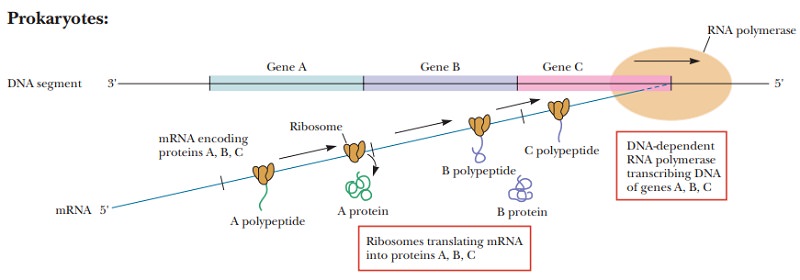
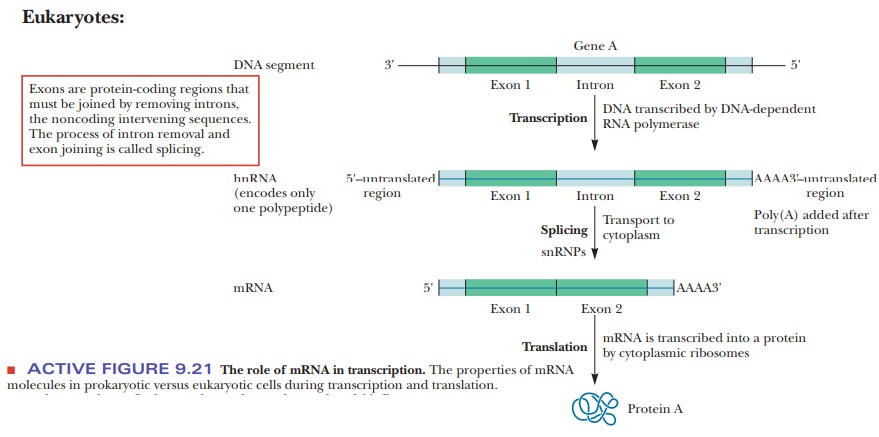
Small
nuclear RNAs are found only in the nucleus of eukaryotic cells, and they are
distinct from the other RNA types. They are involved in processing of initial
mRNA transcription products to a mature form suitable for export from the
nucleus to the cytoplasm for translation. Micro RNAs and small interfering RNAs
are the most recent discoveries. SiRNAs are the main players in RNAinterference (RNAi), a process that
was first discovered in plants and later inmammals, including humans. RNAi
causes the suppression of certain genes. It is also being used extensively by
scientists who wish to eliminate the effect of a gene to help discover its
function. Table 9.1 summarizes the types of RNA.
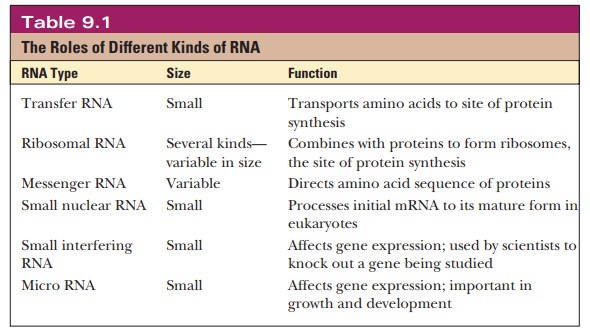
Related Topics